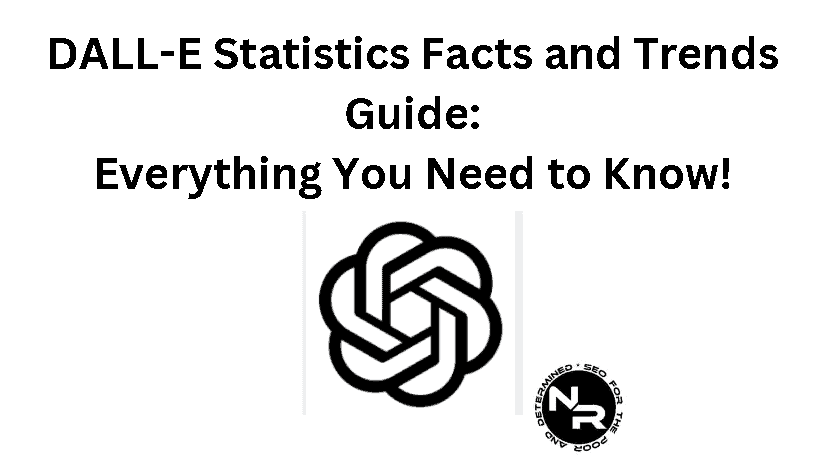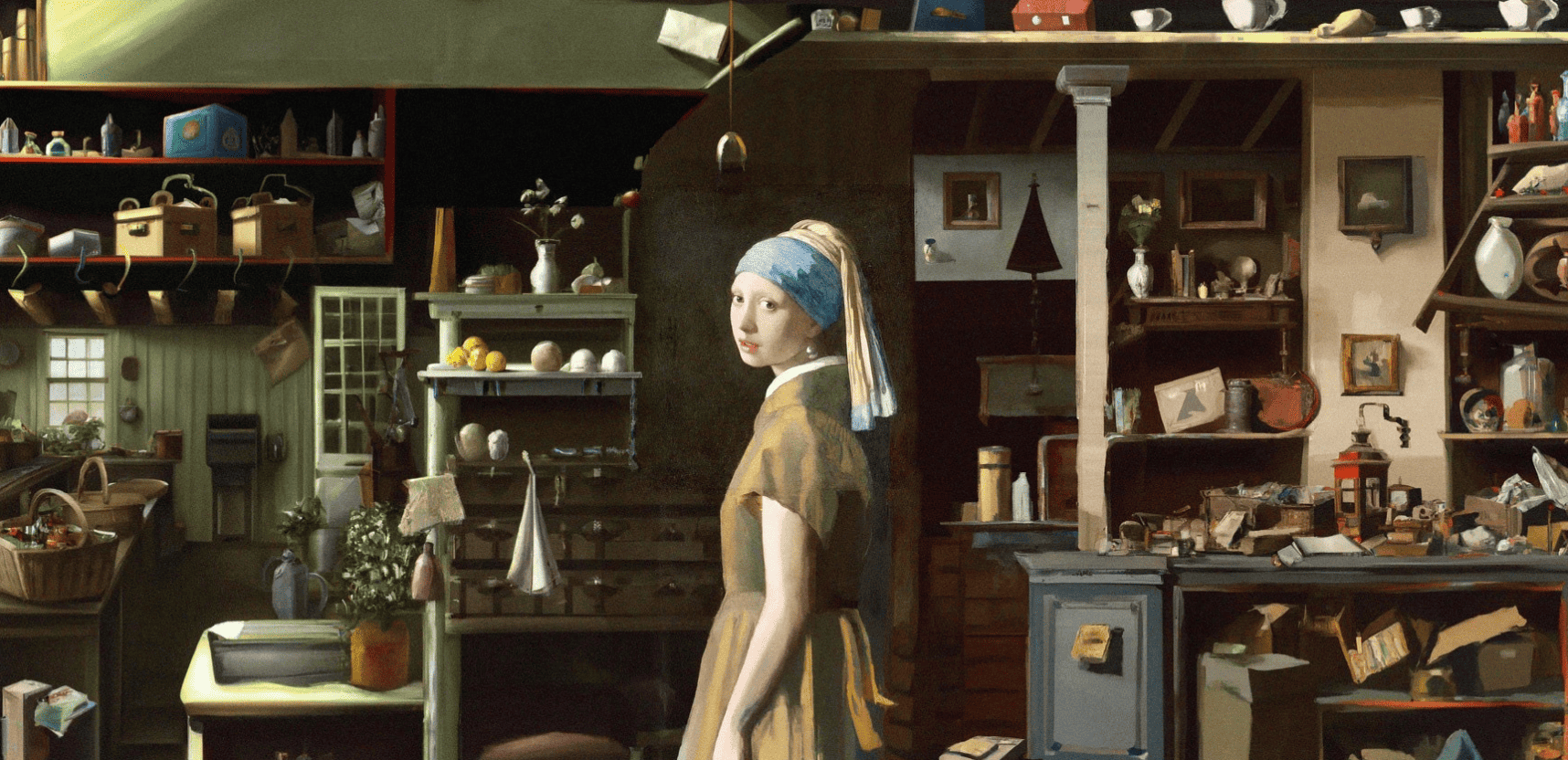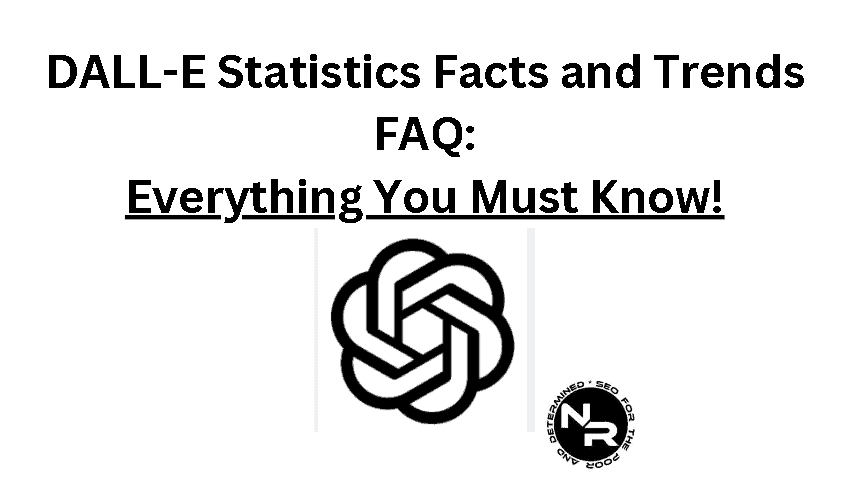Disclosure: Some of the links you’ll encounter are affiliate links. If you click and buy something, I’ll get a commission. If you’re reading a review of some precious metals company, please understand that some of the links are affiliate links that help me pay my bills and write about what I love with no extra cost to you. Thank you!
Looking for the latest DALL-E statistics facts and trends for 2024?
My updated guide has everything you need, and more.
All the references and resources I used in crafting my DALL-E stats guide are listed at the bottom of the page.
Let’s go!

Table of Contents
Key DALL-E Stats and Facts for 2024 (Overview)
- DALL·E boasts an active user base of 1.5+ million individuals.
- DALL-E produces about two million images per day.
- OpenAI’s DALL-E got its name from surrealist artist Salvador Dalí and Pixar’s WALL-E.
- The initial iteration of DALL·E, launched on January 5 2021.
- DALL·E 2, an improved version of the initial version, was launched in April 2022. Around 200 individuals, including artists, researchers, and trusted users, were granted access to this superior tool.
- The first iteration of DALL-E had constraints regarding image size, limited to 256-by-256 pixel squares.
- The second, upgraded version of DALL·E, (entered a private research beta in April 2021), brought forth a huge improvement. DALL-E was now able to generate realistic images of 1,024 by 1,024 pixels, which obviously allowed for the generation of far larger and more detailed and realistic images.
- DALL·E’s most recent version incorporates “inpainting”, an innovative technique that allows for replacing elements within an image with other elements. For example, it’s possible to swap a coffee mug filled with coffee for a tea saucer and a teacup instead.
| Owned by | OpenAI |
| Release date | January 5 2021 |
| Available regions | Most of the world save for a handful of countries |
| Number of users | 1.5+ million |
| Core features | AI-image generation based on image and text prompts |
DALL-E Statistics Facts and Trends for 2024 (Detailed)
Who Created DALL-E?
DALL-E was created by OpenAI, an AI startup headquartered in San Francisco, California, US.
How Did DALL-E Get its Name?
DALL-E got its name from surrealist artist Salvador Dalí and Pixar’s WALL-E.
When Did OpenAI Launch DALL-E?
OpenAI launched the initial iteration of DALL·E, on January 5 2021. DALL·E 2, which is an improved version of the first version, was launched in April 2022.
Around 200 individuals, including artists, researchers, and trusted users, were granted early access to this superior version of DALL-E.
Is There a Waitlist for DALL-E?
There is no waitlist for DALL-E. When DALL·E 2 was first unveiled (April 2022), roughly 200 individuals, including researchers, artists, and high profile users gained access to this advanced tool so they can test it.
How Many People Use DALL-E in 2024?
According to OpenAI more than 1.5 million people use DALL-E.
DALL-E users create 2+ million images per day and that number is rising month over month.
How Many Online Businesses Use DALL-E in 2024?
According to a recent large 2024 survey, 70 000+ online businesses and brands are using DALL-E to generate unique new imagery.
Which Countries of the World Don’t Have Access to DALL-E in 2024?
In 2024 some of the countries that don’t have access to DALL-E and other OpenaAI products are:
- Belarus;
- Russia;
- China;
- Venezuela;
- Iran;
- Afghanistan;
- Ukraine;
- North Korea.
In most of these countries, DALL-E, and especially conversational AI ChatGPT are censored due to being able to provide content that doesn’t comply with local government censorship.
How Much Data Was DALL-E Trained on?
According to the paper OpenAI posted to Arxiv (linked in the reference section) DALL-E was trained on approximately 650 million image-text pairs scraped from the Internet.
In 2024 DALL-E is expected to collect and analyze up to 4 petabytes of data.
Powered by machine learning technology and deep neural network architecture DALL-E learns the relationships between images and the words used to describe them.
This knowledge allows DALL-E to generate new images that resemble those already published on the web, but are actually never before seen content.
What is the Technology Behind DALL-E?
The technology behind DALL-E is a combination of deep learning models and GPT-3 large language model (LLM).
The two artificial intelligence technologies combined serve as a base that allows DALL-E to understand natural language user prompts and generate new images.
How Does DALL-E Generate New Unique Images?
Upon receiving a textual prompt DALL-E (called DALL-E prompts) uses an autoencoder architecture, which is made up of two primary parts: an encoder and a decoder.
First, the encoder receives an image and reduces its dimensions to create a representation called latent space.
Second, the decoder then uses this representation of latent space to create a unique image.
Does DALL-E Have Any Limitations When Creating New Images?
DALL-E is an imperfect product and this AI image generator has limitations when creating new images.
For example, the initial version of DALL-E had limitations with image sizes, which were restricted to only 256-by-256 pixel squares.
The second version of DALL·E came with a significant tech advancement. The image size has increased from 256-by-256 pixel squares to 1,024 by 1,024 pixels, allowing for more detailed visuals.
Finally, the latest version of DALL·E incorporates new techniques like “inpainting,” which is replacing elements in an image with others elements (e.g., swapping a coffee mug filled with coffee for a tea saucer and a teacup instead), and “outpainting“, the ability of DALL-E to extend the image based on the art style of the image and prompt it was given.
For example, here’s an extended image of “Girl With a Pearl Earring” by Johannes Vermeer. As you can see the original headshot artwork was extended to include the torso of the girl as well, along with her surroundings.

Did DALL-E Really Design a Cover of a Magazine?
DALL-E designed the June cover of Cosmopolitan magazine, which was the first time in history an AI image generation system took on such a task.
Do you think it did a good job?

Who Uses DALL-E?
Among 1.5+ million regular DALL-E users, many are creative professionals from various fields. Authors, artists, creative directors, and architects are among those who actively use DALL-E to help them with work in their respective fields.
In fact, DALL-E is predicted to decrease the time and cost of projects by up to 80% for professionals from these specific creativity-based industries.
DALL-E Statistics Facts and Trends 2024 FAQ

#1- Does Elon Musk Own DALL-E?
Elon Musk doesn’t own DALL-E. Elon is an OpenAI cofounder and an early investor as he invested $50 million when OpenAI was just a new startup.
#2- Does Sam Altamn Own DALL-E?
Sam Altman doesn’t own DALL-E. Sam Altman is an OpenAI cofounder but doesn’t own any equity in the company.
#3- Does Microsoft Own DALL-E?
Microsoft doesn’t own DALL-E. However, Microsoft is heavily investing in OpenAI by bringing it to first-party apps and services.
Recently, Microsoft announced that it’s integrating DALL-E 2 with the newly announced Microsoft Designer app and Image Creator tool in Bing and Microsoft Edge.
Microsonf alos have a deal with OpenAI where they use the technology behind DALL-E to power up their AI image creator in Bing Chat.
Learn more about the partnership between Microsoft and OpenAI by reading my OpenAI statistics, Microsoft Bing statistics, Microsoft Bing Chat statistics and ChatGPT statistics guides next.
What is DALL-E Mini?
DALL-E is a free, open-source AI that produces amazing images from text inputs.
DALL-E Mini, now known as Craiyon, has been rebranded and is available for free to all users.
The venture of Crayon is led by Hugging Face, a company known for hosting open-source AI projects.
Will DALL-E Replace Graphic Designers?
DALL-E will not replace graphic designers. Instead, it will enhance their work make it easier and faster, and allow graphic designers to make more money.
Will DALL-E Replace Web Designers?
DALL-E will not replace web designers. Instead, it will enhance their work make it easier and faster, and allow web designers to make more money.
Will DALL-E Replace Artists?
DALL-E will not replace artists. While AI art will become more prominent in the future, there will always be room and a market for genuine human expression.
Does DALL-E Plagiarize Other Artists?
DALL-E doesn’t plagiarize other artists. Instead, DALL-E creates new unique work inspired by all the work it has “seen” and learned from.
So there is no intellectual property infringement.
Is There a Better AI Image Generator than DALL-E?
Currently, there is no better AI image generator than DALL-E. DALL-E is a state-of-the-art artificial intelligence and currently produces the best artificial intelligence art, but given DALL-E’s success no doubt many competitors will spring up soon enough.
Is DALL-E Safe?
DALL-E is a safe app to use. You will not be hacked or download viruses by using DALL-E.
However, DALL-E is not a safe app in the sense that your prompts are recorded by OpenAI and may be viewed by DALL-E engineers.
This is similar to ChatGPT usage. ChatGPT is free, but your usage data becomes training data for ChatGPT.
Can DALL-E Generate Images from Textual Prompts?
DALL-E can generate images from textual prompts.
DALL-E uses NLP (Natural Language Processing) and NLU (Natural Language Understanding) technologies to understand a textual prompt and then proceed to generate the image based on instructions.
Can You add Text Captions to DALL-E Generated Images?
Currently, you’re not able to add text captions to DALL-E-generated images.
According to OpenAI:
“DALL·E is not currently designed to produce text, but to generate realistic and artistic images based on your keywords or phrases. Right now, it does not have a specific understanding of writing, labels or any other common text and often produces distorted or unintelligible results.”
What is a DALL-E Credit?
DALL-E credits are the currency you use to generate images with DALL-E.
There are free and paid DALL-E credits.
Free DALL-E credits are available only to early adopters who signed up to use DALL-E before April 6, 2023.
These free credits expire one month after they are granted, but they also replenish once per month on the date they were first granted.
Paid DALL-E credits cost $15/mo.
Can I Use DALL-E Images in My Blog Posts?
You can use DALL-E images in your blog posts.
Google has nothing against AI-generated imagery.
Can I Use DALL-E Images on Social Media?
You can use DALL-E images on social media. This includes social platforms like Facebook, Twitter, and Instagram, including Instagram Threads (read my Instagram Threads statistics guide here)
DALL-E Statistics Facts and Trends (Conclusion)
My updated guide lists the best and latest DALL-E statistics facts and trends for 2024.
I hope you enjoyed it because the guide is now over.
During my research, I consulted these resources below:
References:
- Dall-e Statistics facts and trends 2024: The Power Of Artificial Imagination
(https://marketsplash.com/dall-e-statistics/) - DALL·E 2: An Inside Look at the Latest Usage Statistics
(https://tryrdp.com/blog/dall-e-2-user-statistics/) - DALL-E Stats and Statistics
(https://aistratagems.com/dall-e-statistics/) - DALL-E Stats and Statistics
(https://www.averickmedia.com/blog/dalle-2-statistics) - (https://www.techtarget.com/searchenterpriseai/definition/Dall-E)
- (https://spectrum.ieee.org/openai-dall-e-2)
- (https://towardsdatascience.com/dall-e-2-explained-the-promise-and-limitations-of-a-revolutionary-ai-3faf691be220)
- OpenAI Says DALL-E Is Generating Over 2 Million Images a Day—and That’s Just Table Stakes
(https://singularityhub.com/2022/10/03/openai-says-dall-e-is-generating-over-2-million-images-a-day-and-thats-just-table-stakes/) - DALL·E now available without waitlist
(https://openai.com/blog/dall-e-now-available-without-waitlist) - https://cdn.openai.com/papers/dall-e-2.pdf
- (https://cointelegraph.com/news/what-is-dall-e-and-how-does-it-work)
- DALL·E: Introducing outpainting
(https://openai.com/blog/dall-e-introducing-outpainting) - (https://wandb.ai/telidavies/ml-news/reports/The-Waitlist-For-DALL-E-2-Is-Gone-Sign-Ups-Now-Open-For-Immediate-Use–VmlldzoyNzEyNjE0)
- Why Sam Altman Won’t Take OpenAI Public
(https://observer.com/2023/06/sam-altman-openai-chatgpt-ipo/) - DALL·E now available in beta
(https://openai.com/blog/dall-e-now-available-in-beta) - Microsoft brings DALL-E 2 to the masses with Designer and Image Creator
(https://techcrunch.com/2022/10/12/microsoft-brings-dall-e-2-to-the-masses-with-designer-and-image-creator/)
Nikola Roza
Nikola Roza is a blogger behind Nikola Roza- SEO for the Poor and Determined. He writes for bloggers who don't have huge marketing budget but still want to succeed. Nikola is passionate about precious metals IRAs and how to invest in gold and silver for a safer financial future. Learn about Nikola here.
